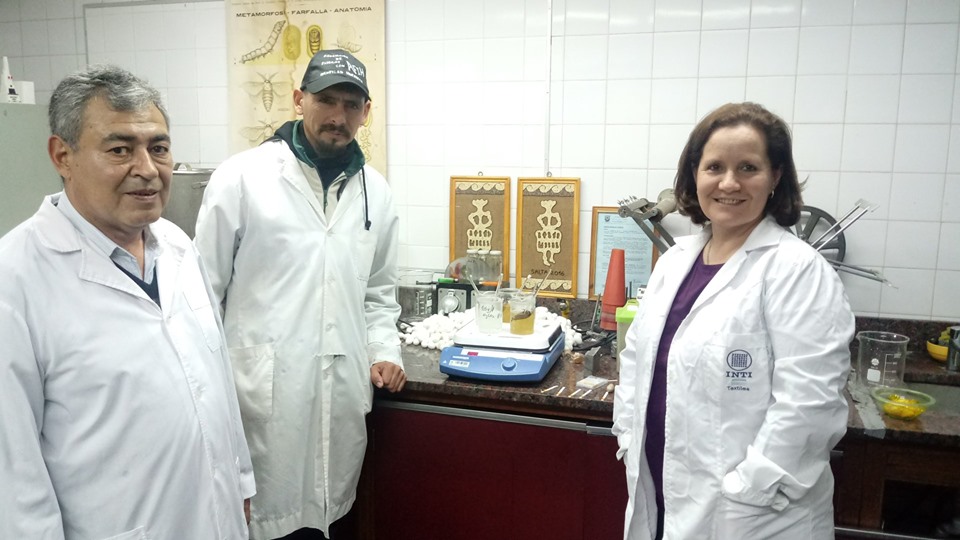Research on Native Silk

Within the framework of the Seda Project co-financed by the European Union through the ADELANTE Programme, an intense week of scientific cooperation in sericulture was carried out in June 2019 at the silk laboratories of the National Institute of Industrial Technology (INTI) between the partners of the Seda Project (National Institute of Agricultural Technology - INTA- and INTI) with the mission of moving forward with the tests of screening, spinning and dyeing with natural dyes of native silk.
The variety of native silk is known as Rothschildia Scheiteriana, and its cocoons of a golden hue are rare in the country and highly valued on the market. "Unlike the Bombyx mori, which is a species that has been domesticated for 5,000 years in the sericulture activity, the Rothschildia has only been used for 2,000 years, not domesticated, and it has always been used as cut silk " explained Agronomist Graciela Romero from INTA Salta. "The Rothschildia is a lepidopteran from a totally natural habitat. In the past, the inhabitants of the northwestern area of the country collected the wild cocoons and then spun them into garments such as blankets, ponchos and scarves. There are records of these works dating back to pre-Columbian times," further explained the engineer.
The winder designed at the INTI-Textiles Center was designed to obtain continuous filament yarn with bomyx mori silk cocoons. Together with Head of laboratory Hugo Enciso, the challenge of the INTA-INTI research team was to adjust the machinery and to devise annexes to achieve the winding of a yarn cone.
While one of the native silk's most important value is its distinctive golden color, "unlike Bombyx, which does not retain the color of its cocoon when sericin is extracted, the native species maintains its natural color," sayd Graciela.
At the chemical laboratories of the INTI-Textiles Center, colorimetry tests were carried out in dyeing with natural dyes, comparing varieties of Rothschildia and Bombyx schappe silk. In visual examinations, it was observed that native silk takes on more colour.
The research group led by Romero focuses on rescuing this native fiber for the province of Salta and returning it to the community to which it belongs, in the mountains, with the aim of rescuing and revaluing their heritage, and so that they have an activity with which they can improve their incomes and quality of life.
"It's a totally sustainable activity, because the cocoons must be collected when the adult butterfly has emerged from it so that the butterfly is not damaged, as it does happens with other lepidopteran species for which it is necessary to suffocate the chrysalis to obtain a continuous filament," said Romero. And he added that "the cocoon is collected when it is no longer of any use to the Rothschildia Scheiteriana".
"It was a pending matter in my research, the winding trials to improve the quality of the yarn. My expectations were high, and I leave with many nice things. We managed to obtain a yarn that maintains the natural golden sheen and we've taken a road for which we know that we must invest many cocoons before we get the technology we have today with the Bombyx Mori species", said Graciela.







